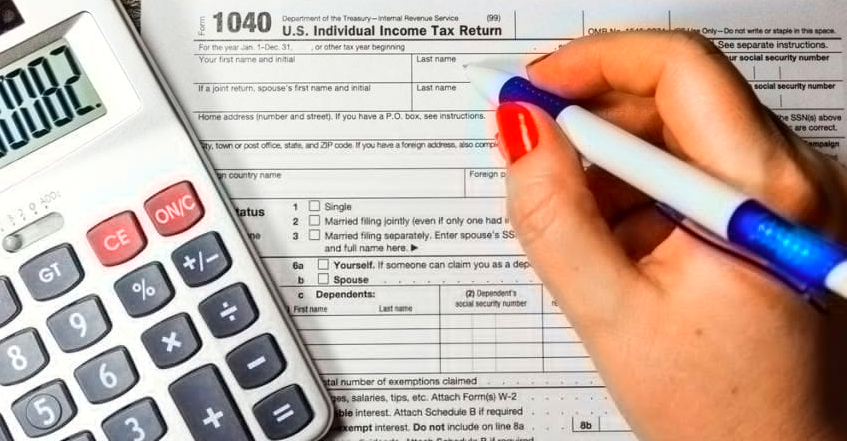You Need to Avoid the Late-Filing Tax Mistakes
Nov 06, 2023 By Triston Martin
You could lose money if you make a mistake on your tax return. A larger refund may be lost, additional taxes may be owed (with interest and penalties), or an IRS audit may be prompted (IRS). Keeping your return error-free is the strongest line of defense against such outcomes.
Verify that your name, SSN, and filing status are right and that your financial data is provided on the appropriate line. Ensure that your tax return is error-free by reviewing it thoroughly for spelling and grammatical errors before submitting it.
Include all of the same data that appears on your W-2, 1099, and K-1 tax forms that the IRS receives. Consider whether or not the standard deduction is preferable to itemizing your deductions.
Get all the deductions to which you are entitled.

Make sure the IRS knows how to properly credit your account with your tax refund or, if you owe money, how to credit your account with the amount you provide properly. Common Errors in Tax Returns The Tax Foundation estimates that as of 2015, there were over 10 million words in U.S. tax statutes and IRS rules, demonstrating the tax system's complexity.
Despite the complexity of the regulations, the most common mistakes made by taxpayers are rather easy to fix. Here are the top 10 filing mistakes and how to fix them.
You mess up the fundamentals.
Verify the correctness of your and your loved ones' names and Social Security numbers. And make sure you choose the appropriate filing status. A person who is not married can file as a single taxpayer; however, if they meet the conditions for being a head of household or qualifying widow(er) with a dependent child, they may be eligible for more advantageous tax rates and other tax advantages. And in some cases, married couples can save money on their taxes by filing their returns individually instead of jointly. If you think you might qualify for more than one filing status, the IRS.gov Interactive Tax Assistant can help you make the right choice.
Your data entry doesn't match what's been reported to you (and the IRS)
Carefully enter your earned income recorded on a Form W-2, Form 1099, Form K-1, etc., including wages, dividends, bank interest, and other sources. The IRS has also received these reports, and government databases seek a match. Contact the company that paid you (your employer, for example) and ask for a revised form if you have any reason to doubt the accuracy of what has been reported. Call the IRS at (800) 829-1040 if you haven't received a corrected Form W-2 before the end of February.
You aren't using the right line to enter data.
Verify that your entries are on the appropriate lines of your tax returns. Don't, for instance, risk your taxable IRA distributions on a rollover that won't incur any taxes. It's less likely to happen if you use tax software, but you should always verify your return thoroughly before sending it in.
However, you may lose money if you automatically take the standard deduction rather than itemizing. Itemizing does require extra work, as well as receipts and other proof. Find out which option provides the best tax deduction. It's important to remember that the Tax Cuts and Jobs Act roughly quadrupled the standard deduction for 2018, making itemizing less advantageous.
But it doesn't hurt to check the odds from both sides. Tax preparation software typically determines the optimal approach for you automatically.
You fail to claim tax breaks for which you are eligible.

Some people might avoid taking advantage of deductions for fear of raising red flags during audits. One persistent myth is that you will be subject to an audit if you claim a home office deduction on your taxes. Since many people now work from home and the IRS has made a simplified deduction option available as an alternative to writing off actual expenses, this is likely not the case. If a deduction is allowed by tax law, it's prudent to claim it.
But, and this is a huge but, you may only claim a home office deduction if you work from home as an independent contractor. Unreimbursed home office expenses are not an allowable miscellaneous itemized deduction on Schedule A for most employees.
.
You Neglected To Remember Your State's Individual Healthcare Obligation
In 2019, the federal government will no longer assess a penalty for each month you (or your family, if applicable) do not have health insurance that meets certain requirements under the Affordable Care Act (ACA). However, you should be aware that certain states have their health insurance obligation.

Taxes
You Need to Avoid the Late-Filing Tax Mistakes
A single digit transposition or omission might significantly alter the reported data. Say you contributed $5,200 to your IRA but only reported $2,500 as the deduction on your return. This would cause you to pay $648 more in taxes (assuming a 24 percent tax bracket) than necessary
Learn More
Taxes
Formal Tax Legislation
The rules for how tax should be calculated are governed by material tax law. Formal tax law governs the tax assessment process and the rights and obligations of taxpayers. The formal tax law also contains rules that can be used to impose fines and even imprisonment.
Learn More
Know-how
What is Homeowner’s Insurance?
Owing a home can be costly. As the value of the property increases, the cost to make repairs to the house also increases, which affects the insurance premium.
Learn More
Know-how
Signs You Are Financially Stable
Is financial stability an elusive goal? Read on to learn the signs that you are financially stable and how you can achieve it with careful money management and smart financial decisions.
Learn More
Investment
A Primer On 401(k) Rollovers For Novices
you may need to transfer funds out of your 401(k) if you are moving jobs or if you are unhappy with the investment alternatives available to you through your current employer's retirement plan (k). A 401(k) rollover is the term for this strategy. When deciding where to send money from a 401(k) rollover, you have several alternatives (k)
Learn More
Taxes
Relocating Costs: What Is Form 3903?
The 2017 Tax Cuts and Jobs Act modified the criteria for taking a tax deduction for relocation costs. Deducting relocation costs on your federal tax return is no longer possible. This modification will be in effect during the upcoming tax years (2018-2025). However, you may be eligible for a deduction if you serve in the active military and fulfill specific requirements or if you need to amend a past return before tax reform.
Learn More